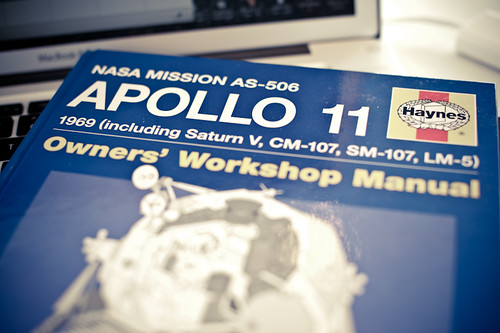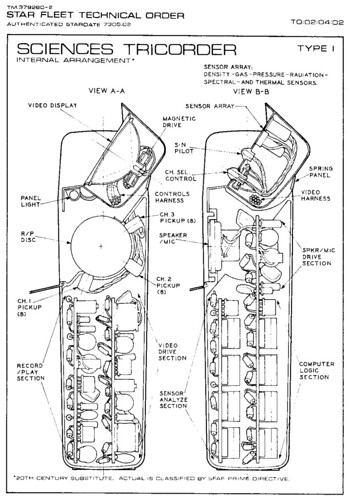Found another design fiction in the form of an Apollo 11 Owners’ Workshop Manual, published by the folks at Haynes. I remember having Haynes service manuals for the two service-it-yourself buckets I had — a 1980 VW Rabbit and that 1972 Toyota Landcruiser which probably spent more time being made drivable than driving around.
The curious thing to note here is the playful distortion of the genre convention of a service and owner’s manual. One would only reasonably have such a manual if you owned the thing you mean to service, or are planning to get it. Making it a routine sort of technical guide puts you in the position of a service technician or even an astronaut who perhaps bought one of these things and now needs to sort out how to get the glitchy STS Antenna system to reboot.
I’d put this in the same category of design fictions as the Star Trek Starfleet Technical Manual and the myriad Star Wars “Essential Guides”, although these take themselves less seriously.
Many of the technical manuals, operators guides and service manuals for the Apollo, Shuttle and Skylab programs are available online — the real-deal. Packaged in this way as a Haynes manual puts this in a whole different category. The manual itself is more of a Time-Life style book as was pointed out to me when I shared this at the recent Sketching in Hardware 2010 event. Inside are many technical diagrams and explanations of systems — as well as astronaut photographs, descriptions of the program and so on. The cover provides the design fiction device of making the extraordinary possibility of owning this thing quite ordinary — oh? that thing in the driveway? Yeah..that’s my lunar lander..stuck valve in the intake manifold I gotta sort out.
Why do I blog this? Trying to capture some of the genre conventions of design fiction to be a little more articulate about what design fiction is and how it works and what it is for.
Continue reading Design Fiction Chronicles: Apollo 11 Owner's Manual

